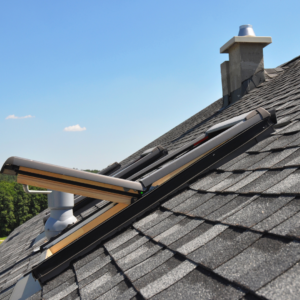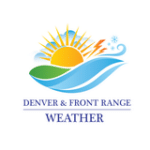Roof leaks can be a homeowner’s nightmare, causing damage to the structure, belongings, and overall peace of mind. By understanding the primary factors that contribute to roof leaks, you can take proactive measures to prevent them and address any issues promptly, ensuring the longevity and integrity of your roofing system.
The main factors that cause roof leaks often include damaged shingles, clogged gutters, flashing issues, and improper roof installation. By addressing these issues promptly and with professional assistance, you can prevent leaks and protect your home from potential water damage.
Common Causes of Roof Leaks
- Damaged Shingles
When it comes to roof leaks, damaged shingles are a primary culprit. Shingles can become damaged due to a variety of reasons, and over time, their effectiveness in protecting your roof diminishes.
Shingle damage is often caused by aging, making them more brittle and susceptible to cracks, curls, and granule loss. Harsh weather conditions can speed up this process. Neglecting regular roof maintenance allows debris to accumulate, trapping moisture and promoting the growth of damaging algae or moss. Damaged shingles compromise the roof’s ability to keep water out, resulting in leaks and potential water damage to your home.
To prevent roof leaks caused by damaged shingles, regular roof inspections are essential. Roof contractors will inspect and look for signs of damage like cracks, curling, missing granules, or discoloration, and replace damaged shingles promptly. Routine maintenance, such as keeping the roof clean, ensuring proper drainage, and removing moss or algae, can extend the lifespan of your shingles and prevent deterioration.
- Clogged Gutters and Downspouts
One of the primary causes of gutter clogs is the accumulation of leaves and tree debris. If left unattended, this debris becomes compacted, creating a solid barrier that prevents water from properly draining.
Another common cause of clogged gutters is the presence of dirt, sand, or silt. These particles can enter the gutters through various means, such as wind or runoff from the roof. Over time, they settle in the gutters, forming a sediment layer that obstructs the passage of water.
When gutters and downspouts are clogged, water has nowhere to go but to overflow onto the roof. This excess water can penetrate the roof’s surface, seep into the underlying materials, and eventually lead to leaks and water damage inside your home.
Regular gutter maintenance is crucial to prevent clogged gutters and downspouts. Cleaning them at least twice a year, checking for damage, installing gutter guards or leaf screens, and ensuring clear and properly aligned downspouts are key steps to maintaining effective water drainage and reducing the risk of roof leaks and water damage.
- Faulty Flashing
One common cause of faulty flashing is damage or deterioration over time. Exposure to harsh weather conditions, such as extreme temperatures, UV rays, and moisture, can cause flashing materials to corrode, crack, or warp. This damage weakens the flashing’s ability to seal the vulnerable areas of the roof effectively.
Improperly installed flashing is a common cause of roof leaks. When flashing is not fitted or secured correctly, it can create gaps or openings that allow water to infiltrate. Inadequate overlap or improper sealing techniques during installation can also compromise the effectiveness of the flashing.
To prevent roof leaks caused by faulty flashing, hire professional roofing contractors to conduct regular inspections and maintenance. Inspect flashing around vulnerable areas, replace damaged flashing promptly, ensure proper alignment and overlap, and seal gaps.
- Improper Roof Installation
One common cause of roof leaks due to improper installation is poor workmanship. If the roofing contractor lacks the necessary skills, experience, or attention to detail, they may not properly secure the roofing materials, leading to gaps, loose shingles, or inadequate seals. These vulnerabilities can allow water to seep through the roof, causing leaks.
The use of incorrect materials during the installation process can also contribute to roof leaks. Inadequate or substandard roofing materials may not offer sufficient resistance to water penetration or may not be compatible with the existing roofing system. This can lead to premature deterioration, weakened seals, and ultimately, roof leaks.
Shortcuts taken during the installation process can further compromise the integrity of the roof. Rushing through the installation, skipping essential steps, or neglecting proper flashing and underlayment installation can leave vulnerable areas susceptible to water infiltration. It is crucial to ensure that your roof is installed by reputable, experienced, and professional roofing contractors who adhere to industry standards and best practices.
Other Contributing Factors
In addition to the primary causes of roof leaks discussed earlier, there are several other contributing factors that can lead to water intrusion and roof damage.
- Damaged vents and skylights: Regularly inspect and maintain roof vents and skylights to prevent water intrusion and roof leaks. Damaged or poorly sealed components can create vulnerabilities for water entry. Timely repairs are essential for maintaining the integrity of your roof.
- Misplaced or improper nails: Proper nail placement and installation are essential to prevent water infiltration. Misplaced or improper nails can create openings in the roofing system, leading to potential leaks. Ensure nails are correctly positioned and driven during installation or repair.
- Roof pitch and design: Roof pitch and design impact water shedding. Low pitches or inadequate drainage can lead to water pooling and increased leak risk. Proper design and installation, along with effective drainage systems, are necessary to prevent water accumulation.
- Ice dams: Ice dams in colder climates can obstruct drainage and cause water to seep under shingles, resulting in leaks. To prevent this, ensure proper insulation, and ventilation, and remove ice dams regularly.
Prevention and Maintenance Tips
To minimize the risk of roof leaks, regular preventive measures and maintenance are essential. Here are some tips to consider:
- Schedule regular roof inspections by a professional and expert roofing inspector like Just Roofs and Gutters to detect any early signs of damage.
- Maintain gutters and downspouts by cleaning them regularly and ensuring proper water flow.
- Replace damaged or missing shingles promptly to maintain the integrity of your roof.
- Check and maintain flashing to ensure a watertight seal.
- Ensuring proper attic ventilation helps prevent moisture buildup.
- Invest in professional roof installation to avoid issues caused by poor workmanship.
Recognizing Early Warning Signs
Recognizing the early warning signs of roof leaks is essential in preventing extensive damage to your home. Here are some key indicators to watch out for:
- Water Stains: Notice any discoloration or yellowish-brown stains on your ceilings or walls. These stains often indicate water seepage from the roof.
- Damp Spots: Keep an eye out for areas of your ceiling or walls that feel damp or moist to the touch. This moisture is a clear sign of water penetration.
- Mold Growth: Mold thrives in damp environments, so if you notice any mold or mildew growth on your walls or ceilings, it’s a strong indication of a roof leak.
- Musty Odor: A persistent musty smell in your home can be a result of water damage caused by a roof leak. Pay attention to any unusual odors.
- Peeling Paint or Wallpaper: When water infiltrates your walls, it can cause paint or wallpaper to peel or bubble. This is a clear indication of water damage and a potential roof leak.
- Dripping Sounds: If you hear the sound of dripping water coming from your ceiling or walls, it’s a definite sign of an active roof leak that needs immediate attention.
When you spot any of these warning signs, it’s important to take prompt action. Contact a professional roofing contractor like Just Roofs and Gutters to assess the situation, identify the source of the leak, and perform the necessary repairs. Ignoring these signs can lead to further damage to your roof, structural issues, and even health hazards from mold growth.
Can roof leaks cause mold growth?
Yes, roof leaks can lead to mold growth if left unaddressed. When water seeps into the structure of the roof and accumulates in dark and damp areas, it creates an ideal environment for mold to thrive. Mold can then spread to other parts of your home, potentially causing health issues and further damage. It is crucial to promptly address roof leaks to prevent mold growth and maintain a healthy living environment.
Take action today to protect your home from roof leaks. Stay informed and empowered by implementing preventive measures and addressing any roofing issues promptly. Don’t wait until it’s too late – safeguard your property and ensure peace of mind. Contact Just Roofs and Gutters and schedule a professional roof inspection.





